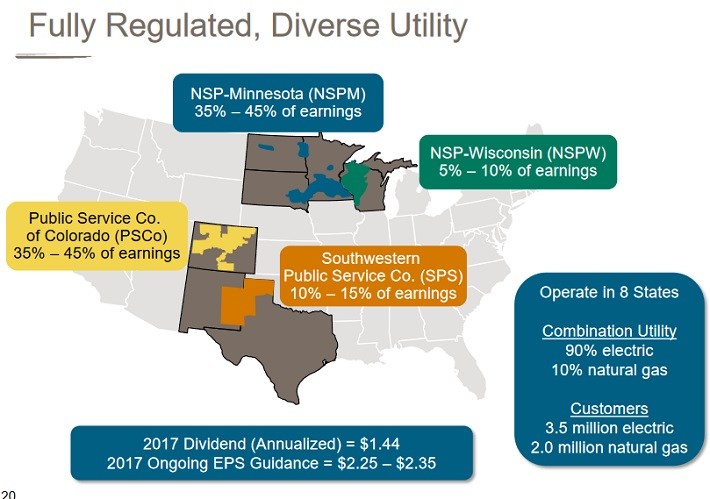Income investors should consider adding some U.S. utility stocks to their portfolios.
Utilities are extremely stable. Electricity and gas are defensive industries. They see continuous demand, even during recessions.
This allows them to be consistent dividend payers over long periods of time.
Duke (DUK) and Xcel (XEL) are both Dividend Achievers, a group of 271 stocks with 10+ years of consecutive dividend increases.
You can see the full Dividend Achievers List here.
Duke has paid dividends for more than 90 years.
Xcel, going back to its days as Northern States Power, has paid dividends for over six decades.
Duke and Xcel are very similar companies. They both provide electric and natural gas services, mostly in regulated markets.
This article will discuss which of these two U.S. utility giants, could be the better dividend stock to buy today.
Business Overview
Winner: Xcel
Xcel Energy is a fully-regulated utility. It has operations in eight U.S. states, mostly in the West and Midwest.
Its customer base includes 3.5 million electricity customers, and 2.0 million natural gas customers.

Source: March 2017 Morgan Stanley Conference, page 20
Approximately 90% of Xcel’s earnings come from electricity, with the remaining 10% from gas.
Duke is also an electric and gas utility. It has a large regulated utility business that has approximately 7.4 million electric customers. Duke Energy’s customers are located in six states in the Southeast and Midwest.
It also distributes natural gas to more than 1.5 million customers in the Carolinas, Ohio, Kentucky and Tennessee.

Source: 4Q Earnings Presentation, page 4
The company’s electric utility business comprises nearly 90% of its total earnings.
Duke’s adjusted earnings-per-share rose 3.3% in 2016. Growth was driven by favorable weather conditions, cost controls, and acquisition-related synergies.
Meanwhile, Xcel’s adjusted earnings-per-share grew 5.7% last year. Like Duke, it also benefited from favorable weather. It had the added advantage of stronger rate increases.













Leave A Comment